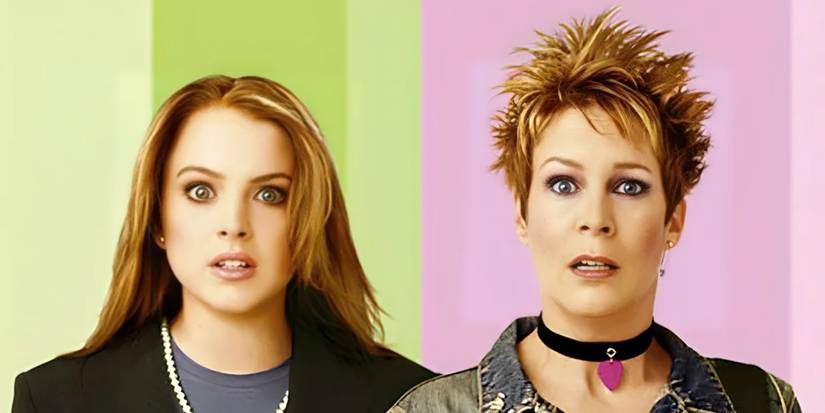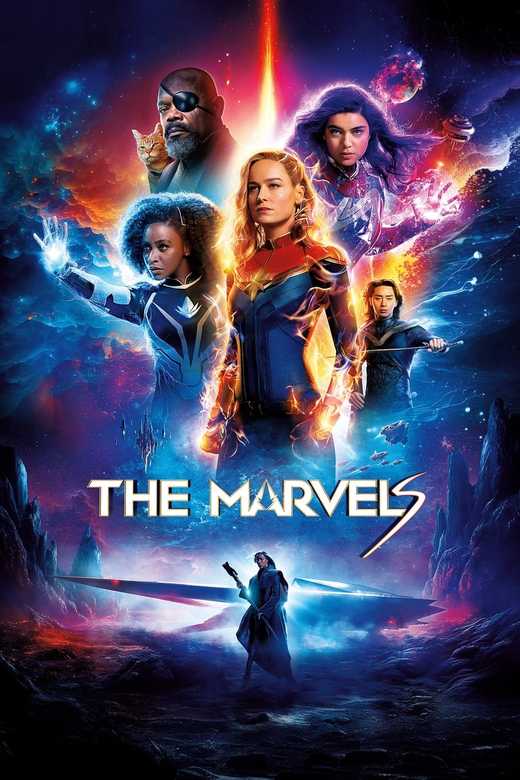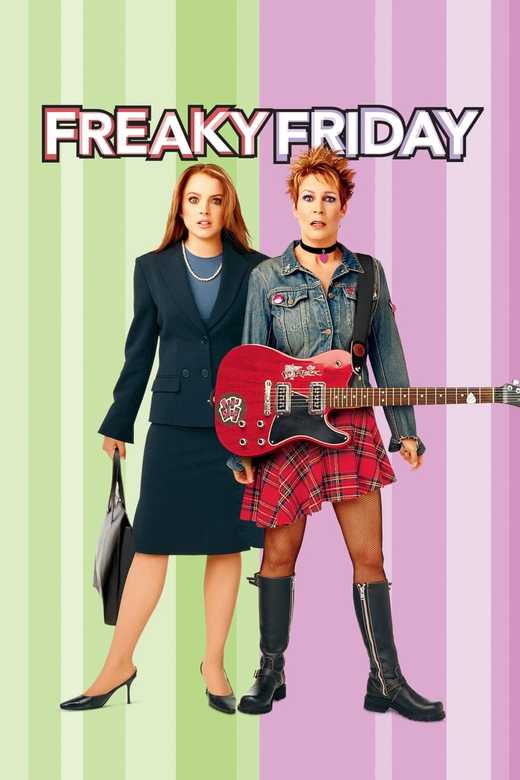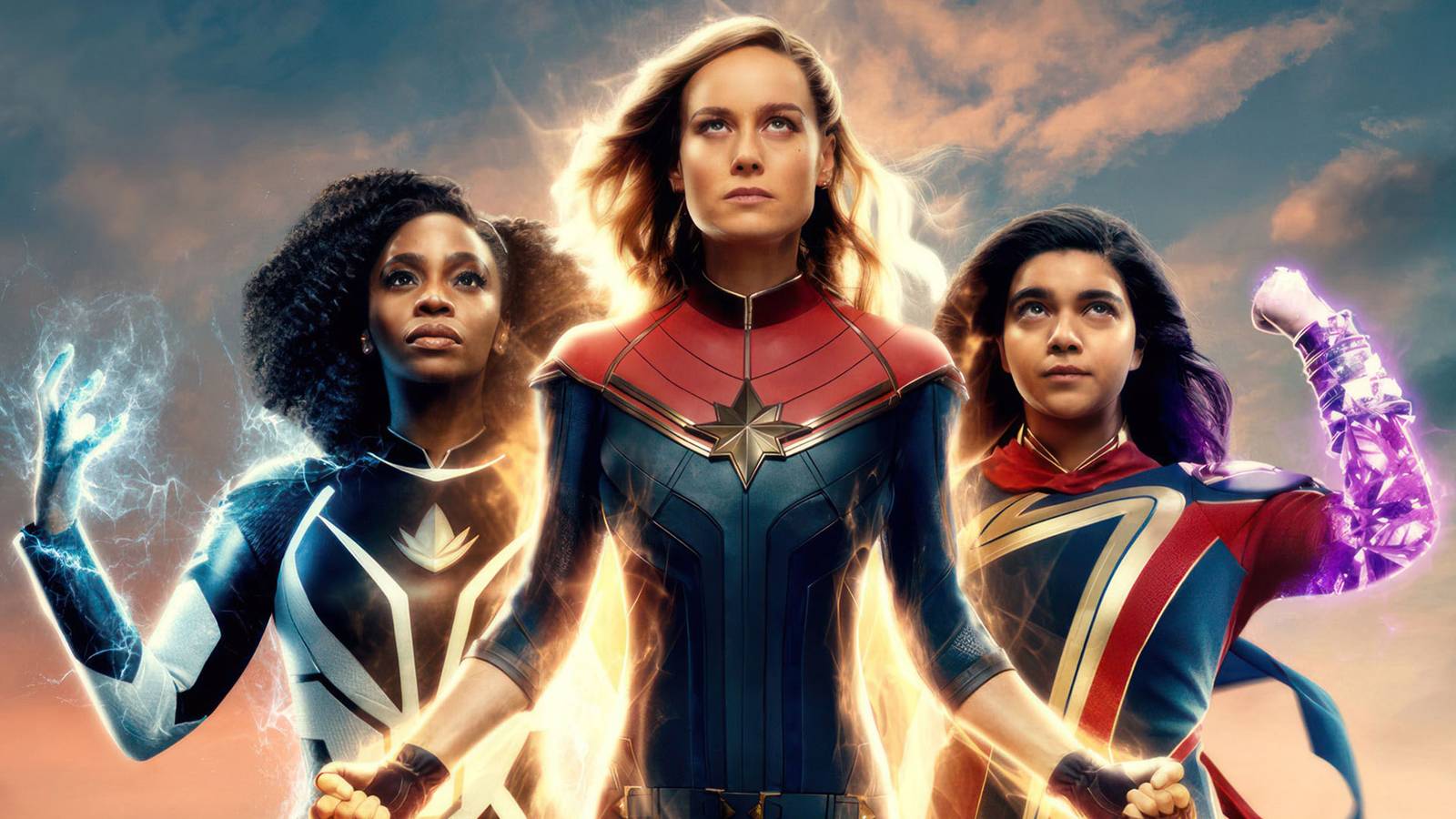Released in 2023, The Marvels was perhaps the nadir of the Marvel Cinematic Universe, and for several reasons. Becoming the biggest flop from Marvel Studios, it was also one of the biggest such box office disappointments in general. Its critical reception wasn’t much better, and it’s, ironically, a much worse version of a Disney franchise that recently received a sequel.
Freaky Friday was a 2000s-era hit for Lindsay Lohan, and it cemented her as one of the requisite “it girls” of the decade. Remixing a timeless idea, its body-swap premise was part of a larger franchise that began back in the 1970s. Though it has nothing to do with superheroes, it’s certainly a much better version of what The Marvels was desperately.
The Marvels Was the MCU’s Biggest and Most Infamous Misfire
Going into the film’s release, there were already a lot of things working against The Marvels. For one, the character of Carol Danvers hadn’t really “gotten over” with mainstream audiences or even comic book fans. She was a B-lister at best when she used the Ms. Marvel identity, and many of the changes made to her character when she became Captain Marvel weren’t the most endearing. Even her initial Marvel Cinematic Universe triumph had a qualifier on it, as many suspected that the film made over $1 billion USD due more to its being pushed as a must-watch to understand the plot of Avengers: Endgame. On top of this, it seemed Marvel Studios had little faith in the character, as her first (and likely only) sequel was a shared spotlight with two other characters.
Monica Rambeau/Photon was introduced in the well-received TV show WandaVision, but her actions and dialogue made her one of the most disliked parts of it. Likewise, while Iman Vellani’s Kamala Khan/Ms. Marvel was well-liked by fans, but her show had the lowest ratings of any MCU Disney+ TV series at the time. Thus, it seemed almost like a last-ditch effort to popularize all three of the characters, with this ultimately backfiring massively.
The Marvels was a marvelous flop, barely making over $200 million USD at the global box office. Given that the production was at least around $300 million USD, it was a particularly hideous black eye on the once venerable Marvel Studios, not to mention further proof concerning the performance of Danvers’ first movie. There was overall a sense of lackluster “ho-hum” surrounding everything in the film, from its character interactions to its action scenes. A big part of this had to do with its central concept, which felt far too cartoonish for characters who needed anything but.
The Marvels has Captain Marvel, Photon and Ms. Marvel all switching places whenever they use their powers, forcing them to work together to solve this mystery. For as much as the plot hinges on this, it’s not explained well enough or adhered to enough. As a result, there are times when they use their powers and don’t switch, raising several questions in the process. Likewise, it’s not as if they actually switch bodies with each other, with Carol suddenly finding herself in the teenage body of the young mutant Kamala Khan. Thus, it’s a complete waste of what could have been a much more fun idea, even if it wasn’t exactly what was needed to cement Carol as a hero in her own right.
Ironically, this body switch concept is based on the Silver Age “Mar-Vell” Captain Marvel, who temporarily switched bodies with professional sidekick Rick Jones (who once hung out with Marvel’s brutish Savage Hulk). This was itself an homage to the true Captain Marvel, a.k.a. Billy Batson, who’s now published by DC Comics. That character, in modern times, is written as retaining his childlike personality when he becomes the world’s mightiest mortal, and it would have been interesting to see Kamala do the same with Carol or even Photon’s powers. Not only did The Marvels fail to represent this sort of superhero legacy, but it’s also especially bad next to a modern Disney classic.
The Freaky Friday Franchise Has Been Around for Decades

The poster for 2003’s Freaky Friday.Credit: Image via Disney
Starting as a novel by Mary Rodgers that was released in 1972, the first version of Freaky Friday was released in 1976. The original story involved a mother named Ellen and her teenage daughter Annabel, who wished they could live each other’s lives for one day, despite their constant arguing. Their wish ends up being granted on the day Friday the 13th, causing them to end up in each other’s bodies.
This basic plot was adapted once more in 1995 with Disney’s first movie version of Freaky Friday, though Annabelle’s name was now spelled differently. Easily the most iconic version, however, was released in 2003, and it’s been a Disney fan-favorite ever since. The 2003 Freaky Friday iteration modernized the central premise somewhat, switching out Friday the 13th for the magic of Chinese fortune cookies. Likewise, the mother and daughter pair, now played by Jamie Lee Curtis and Lindsay Lohan, had new names.
The overworked mother in the Mark Waters film was now Tess Coleman, though the daughter’s name Anna still honored the original version. Disney also had a somewhat overlooked 2018 Disney Channel Original Movie incarnation of Freaky Friday, with this having radically new characters but still being based around a mother and daughter. It was notably inspired by the 2016 stage version, which was also a musical.
Despite comparisons to other versions, it was very well-received in its own right, but this wouldn’t be the end for the brand. Now, seven years later, the long-awaited sequel to the 2003 version has been released. Coming out in August 2025, Freakier Friday took the formula to a new level, having Tessa and Anna switch bodies with both Tessa’s daughter and her soon-to-be stepdaughter. Making over $100 million USD more than its production budget, it’s a nostalgic hit for those who grew up with what they likely regard as the successful “original” movie.
How a Lindsay Lohan Comedy Did What Marvel Studios’ Biggest Flop Couldn’t
On its surface, the basic idea of Freaky Friday is a good vehicle for comedy, especially when it comes to generational differences and other situational gags. These can be changed for each iteration, especially since there’s usually a gap of around a decade or more between these versions. After all, the original was in the ’70s, with the other film versions coming out in the 1990s, the 2000s, the 2010s and the 2020s. From slang to youth culture, there’s a lot of change going on in between these eras.
This keeps things fresh on a superficial level, but there’s also the dramatic aspects at play in the premise. Freaky Friday movies are always a learning lesson for the characters involved, with the daughters realizing that their moms aren’t quite as uncaring or unnecessarily stern as they believed. Likewise, the moms in Freaky Friday end up digging deeper into their daughters’ lives and psyches, coming away with their own furthered understanding. It’s a moral fable that organically has family at its heart, and it works well for the intended target audience.
All iterations of Freaky Friday have a largely female target audience, and they’ve embraced it to a T, with the 2003 version being seen as one of the quintessential modern “chick flicks.” It seemed as if this was what The Marvels wanted to be, but with the caveat of being a science fiction superhero blockbuster. As a result, it didn’t appeal to the target audience of Freaky Friday due to these extra genre shenanigans, but it was also too “Disney Channel” for the usual superhero movie fanbase.
Add in the lack of much hype with The Marvels trio, and it was essentially a film with no real audience. As mentioned, it only slightly took advantage of its concept, and it’s not as if the characters truly switched bodies. Doing so might have allowed both Kamala and Monica to understand what it’s like to be Carol, while the latter might learn more about both being vulnerable and also having a family (in the case of Kamala’s parents).
Doing that would have taken the “superhero Freaky Friday” idea to its logical fruition, and this would ultimately have been much more interesting. There are a lot of elements in The Marvels that were clearly left on the cutting room floor, though this might have been for the best. These include an extended amount of time on the singing planet, with the very inclusion of this inane concept once again feeling like a hackneyed attempt to cater to a non-existent audience.
It speaks to a movie that never even tried to play to its strengths, as few as they even were. While 2025’s successful Freakier Friday hasn’t quite made the $200 million USD at the box office that The Marvels did, its actual profit is much higher, namely, by virtue of there being profit at all. The sequel didn’t try to reinvent the wheel or appeal to those who disliked the 2003 version, but it instead doubled down on what made that film work. As a result, Disney is more than happy with its performance, but The Marvels remains one of the lowest points in the MCU’s history.

Release Date
November 10, 2023
Runtime
105 minutes
Director
Nia DaCosta
Writers
Megan McDonnell, Elissa Karasik, Nia DaCosta
Producers
Kevin Feige, Louis D’Esposito, Victoria Alonso, Matthew Jenkins, Jonathan Schwartz
Prequel(s)
Captain Marvel

Brie Larson
Carol Danvers / Captain Marvel

Teyonah Parris
Monica Rambeau

Release Date
August 5, 2003
Runtime
97 minutes
Director
Mark Waters
Writers
Heather Hach

Jamie Lee Curtis
Tess Coleman

Lindsay Lohan
Anna Coleman





